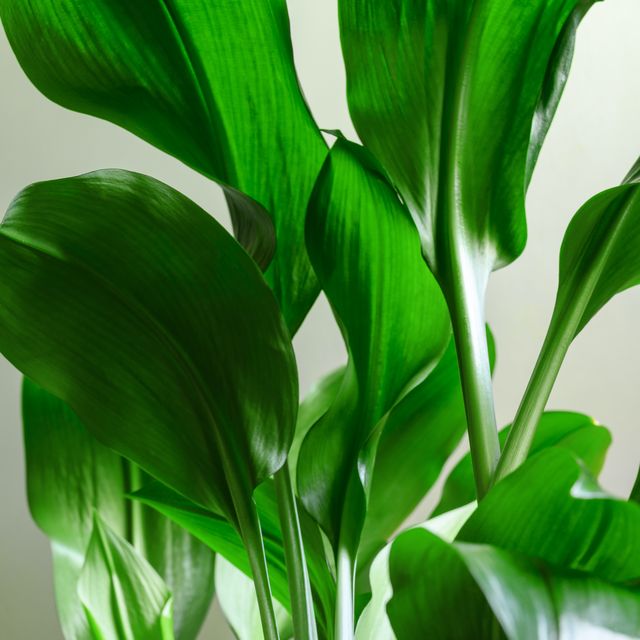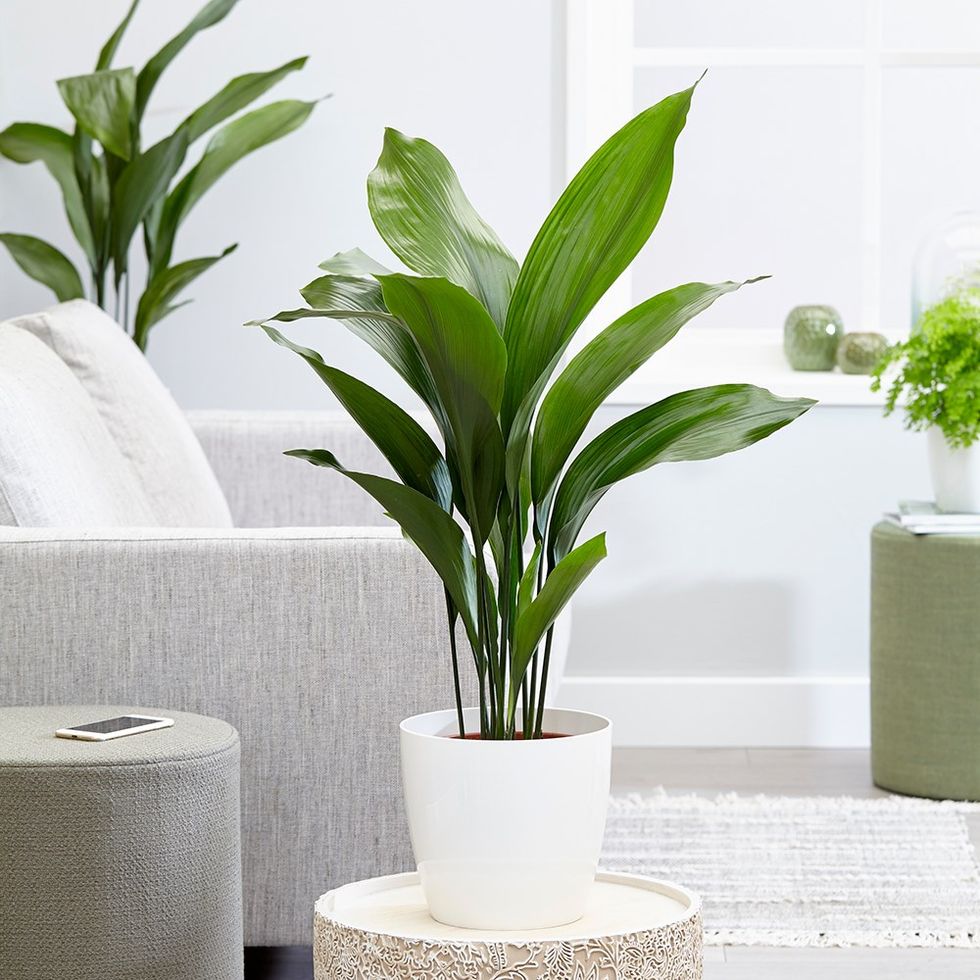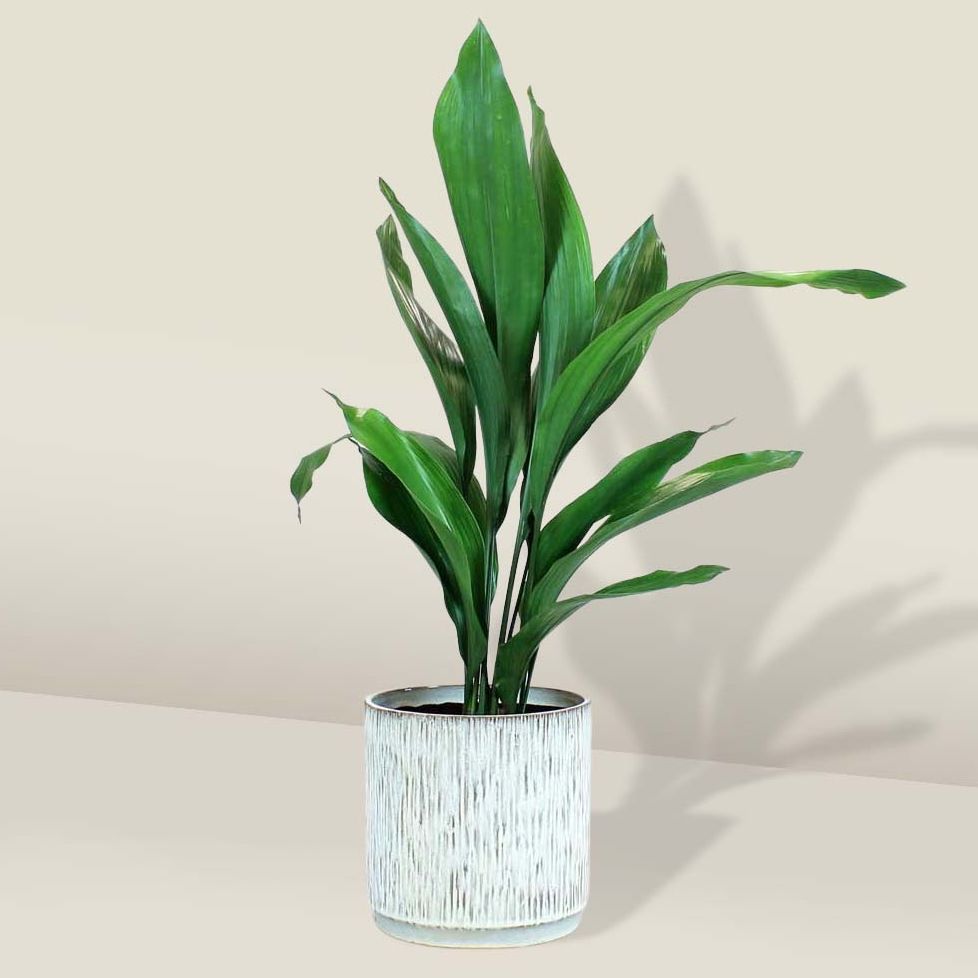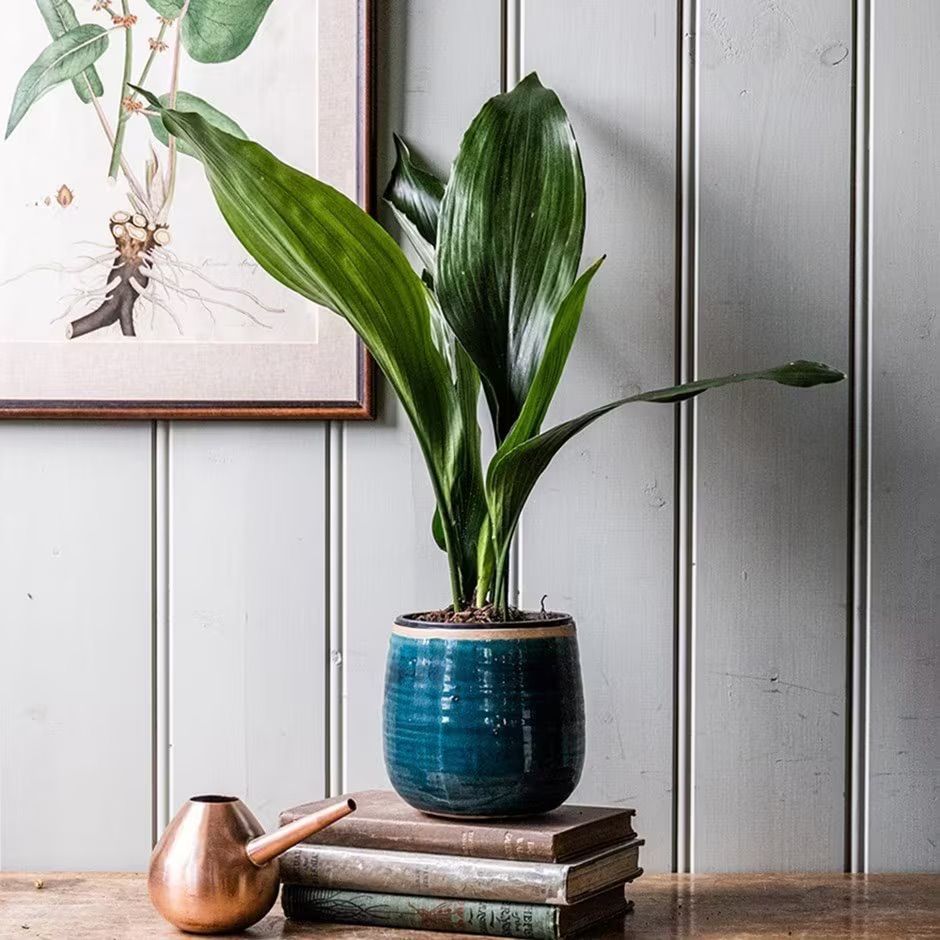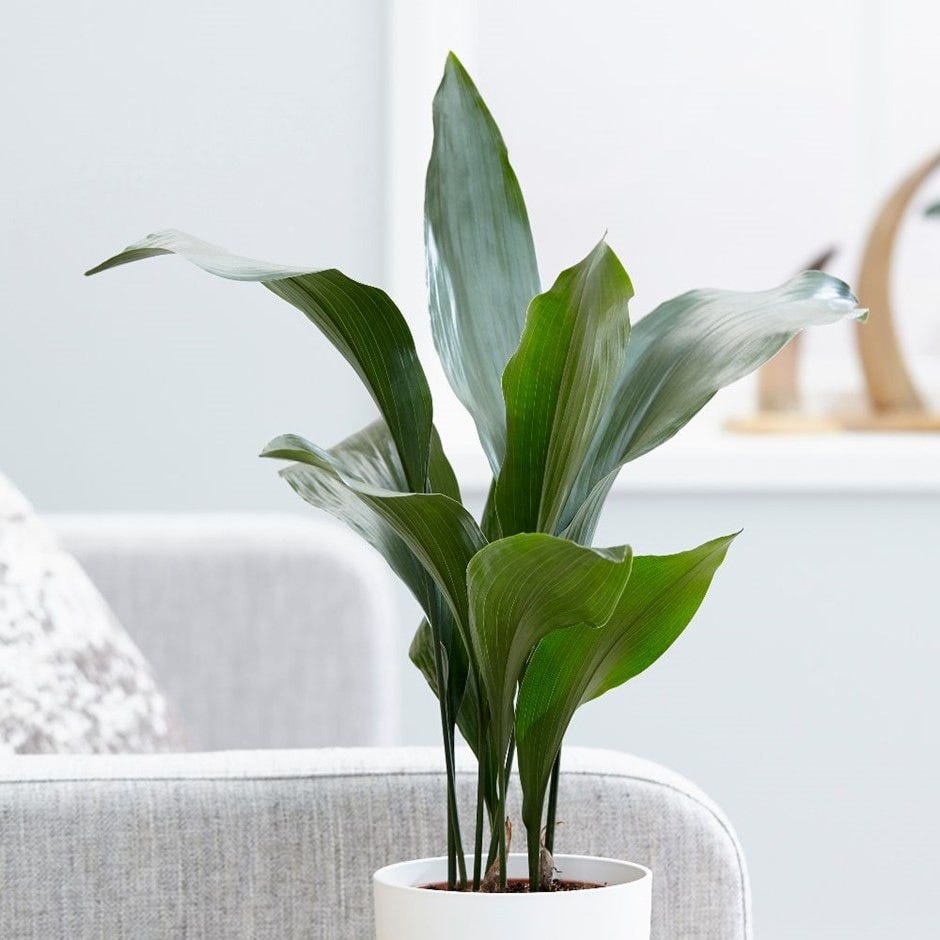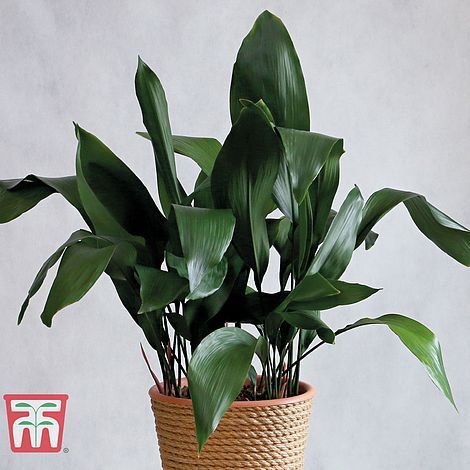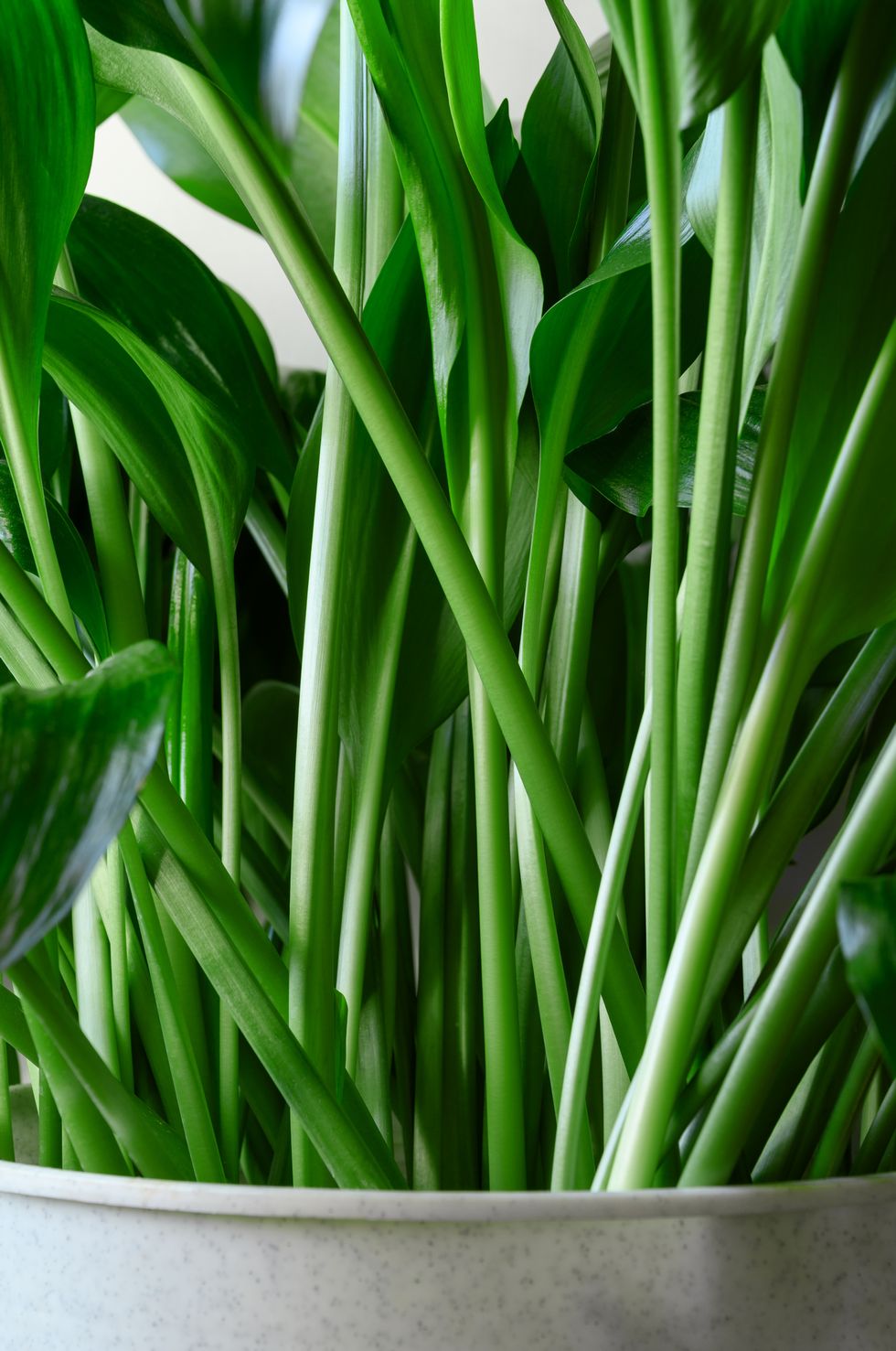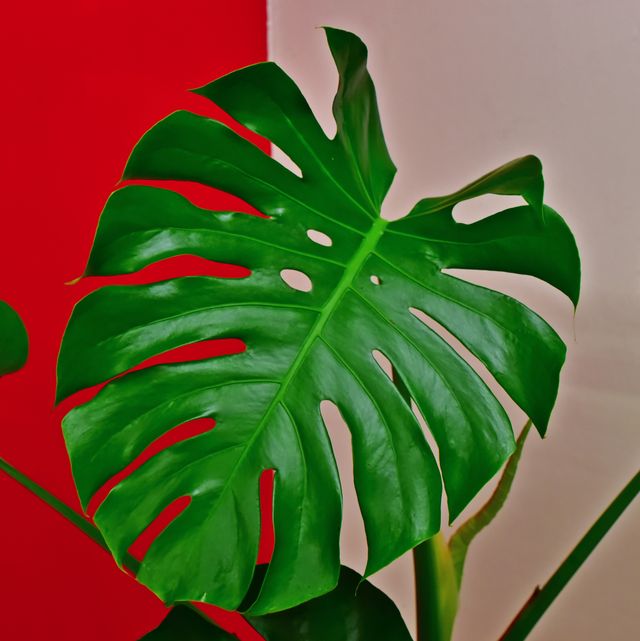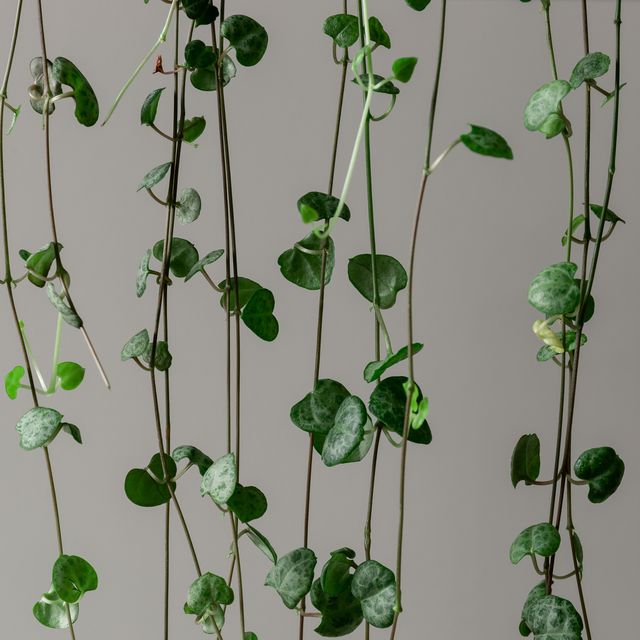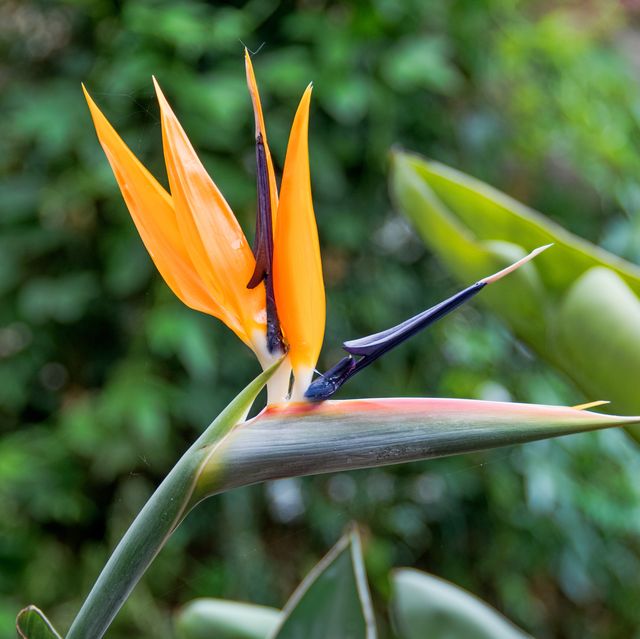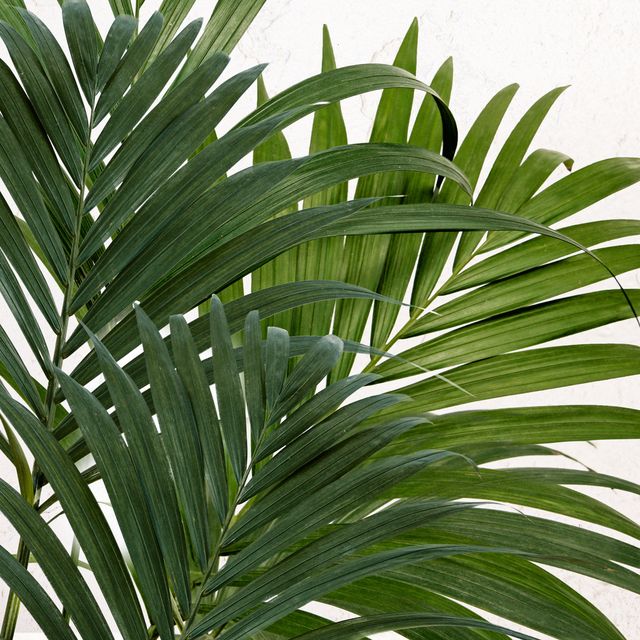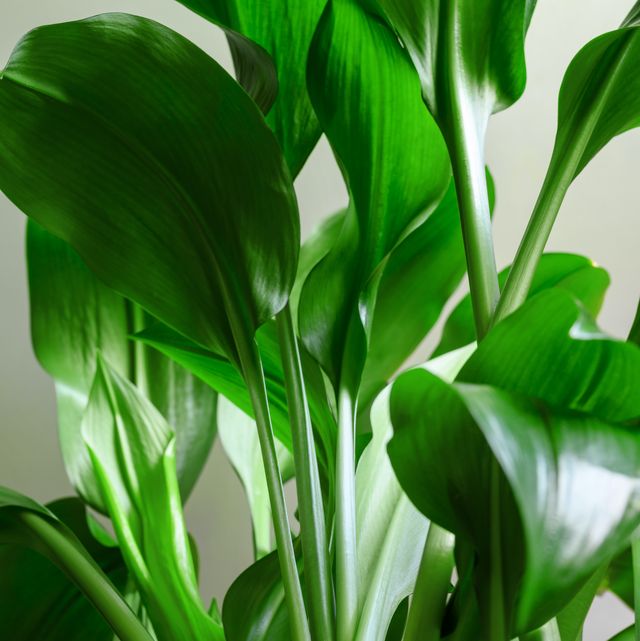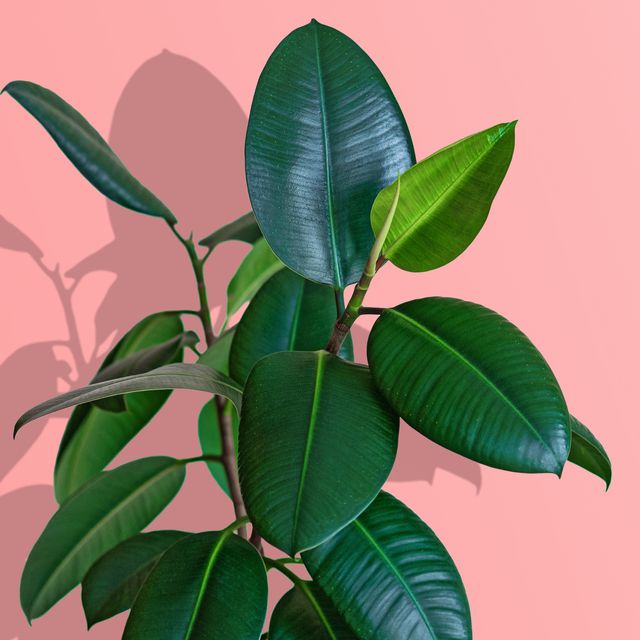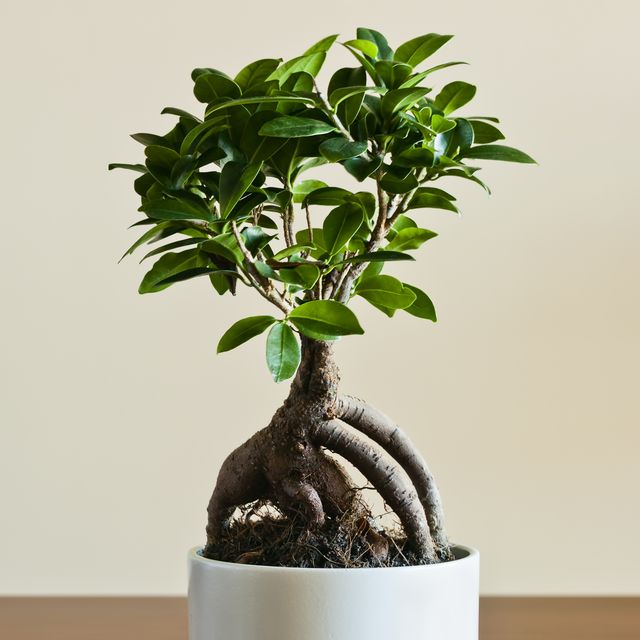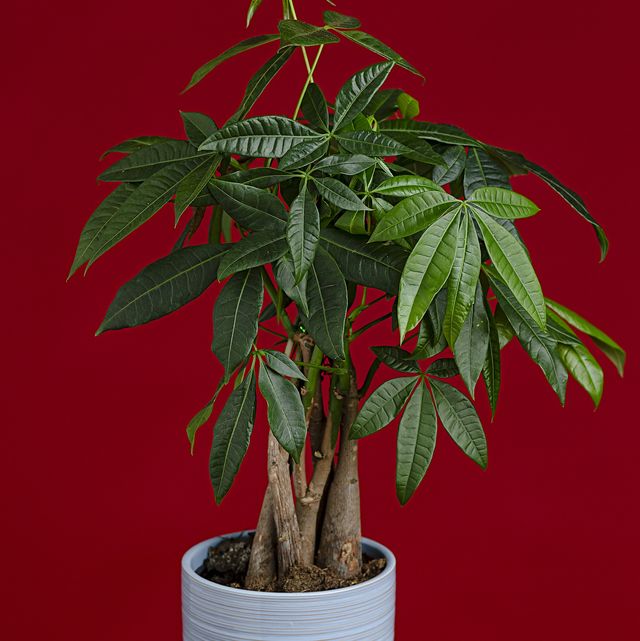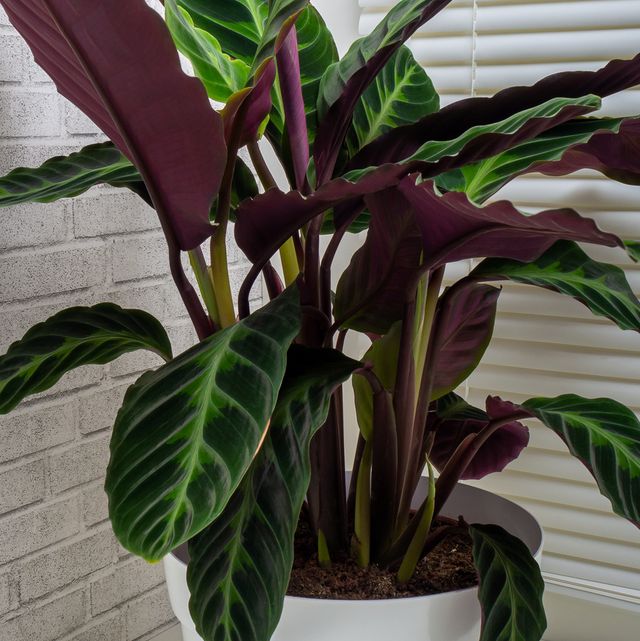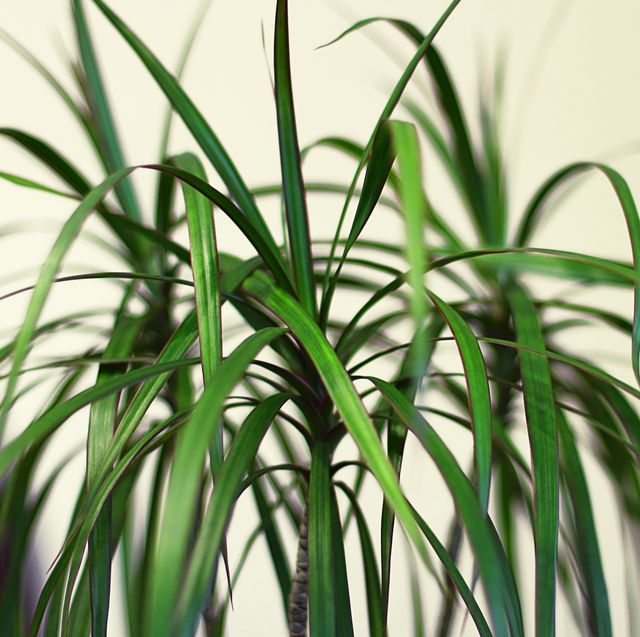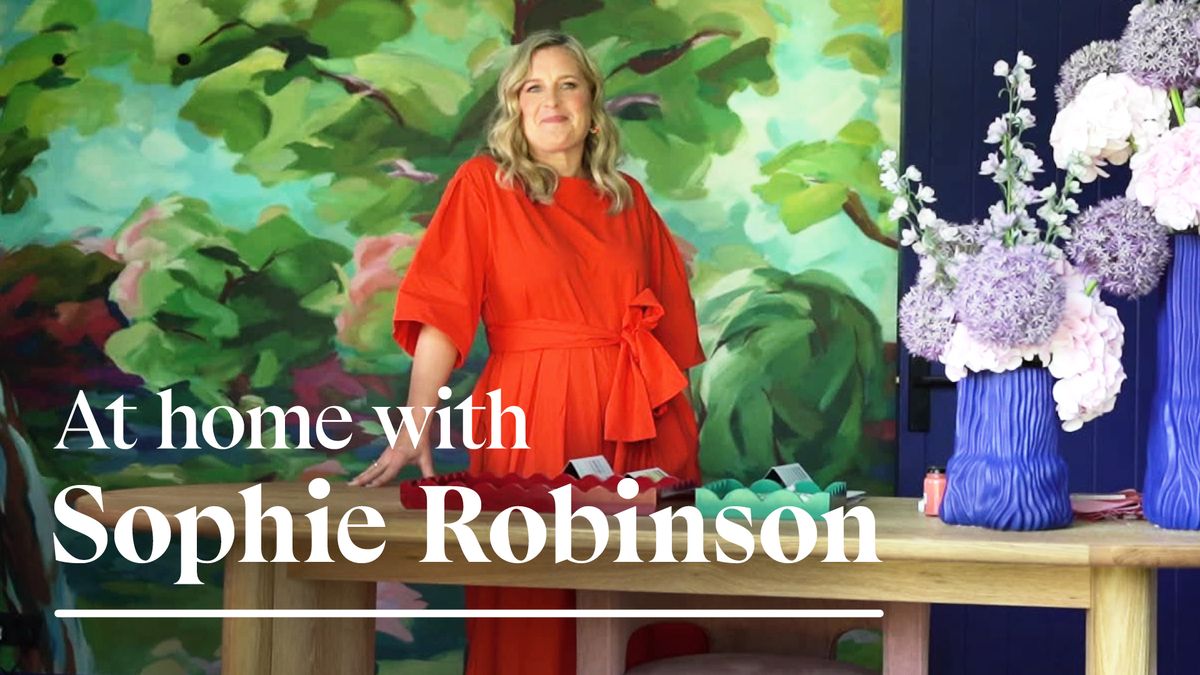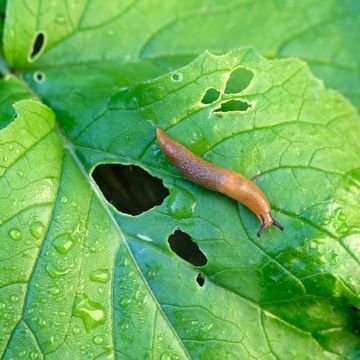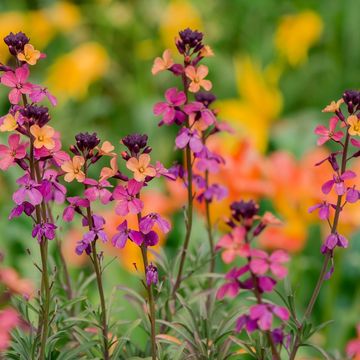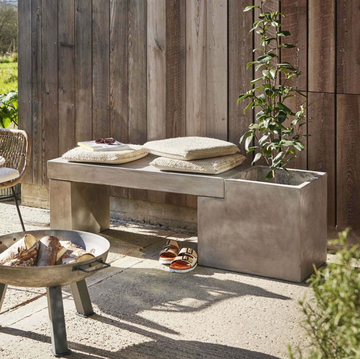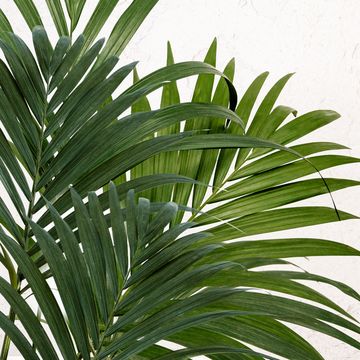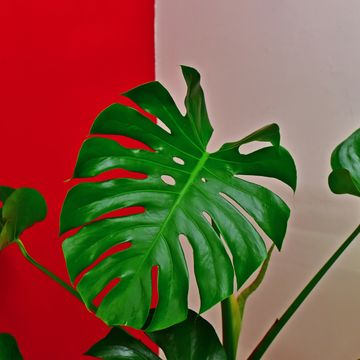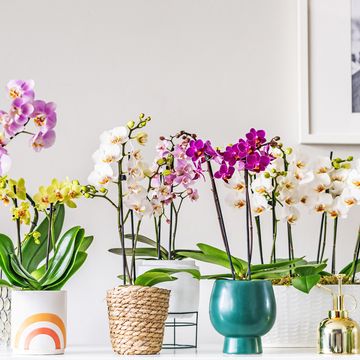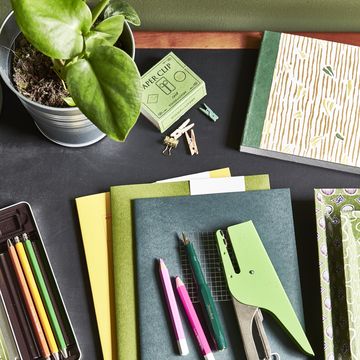If you're wondering where the cast iron plant got its name, it's because this houseplant is about as indestructible as a cast iron pan. Even if this plant gets low light, no water and little acknowledgement from you, it will happily take care of itself and continue thriving with no issues. This makes it perfect as a starter houseplant for plant lovers with little experience, or a great choice for someone looking for a low-maintenance green companion.
This quality rightfully makes this plant, also known as Aspidistra, very popular. Aspidistra initially gained attention as an easy-to-care-for houseplant in Victorian times, as it easily tolerated the poor air quality and low light that characterised homes in the 19th century. It's just as popular today and its dark green, glossy leaves are a perfect fit for any living room.
What is a cast iron plant?
Aspidistra elatior, or the cast iron plant, originated in China and Vietnam. It built up the tolerance to poor conditions that it's now known for by growing under the shade of larger trees, making it hardy and difficult to kill. Here it's mostly known as a houseplant, but it can survive and thrive outside in the right conditions – as it's so tough it can often survive where other plants can't.
It grows well in low light, doesn't require much water and isn't fussy about temperature, either. The cast iron plant can be recognised by its arching, glossy green leaves, which can reach more than half a metre in length. This plant usually only flowers when grown outside, producing small purple and cream blooms at its base, but don't let the lack of flowers put you off. The cast iron plant is a steady and reliable slow grower which will reward your slight neglect by flourishing all on its own.
Popular varieties of this houseplant include:
- Hoshi-zora, which means starry sky and refers to the white and yellow dots speckling the leaves
- Variegata, featuring green leaves with white stripes
- Lennon's Song, with yellow or light green striped leaves
- Asahi, featuring green leaves with white tips which develop as the plant grows.
The cast iron plant at a glance:
• Botanical name: Aspidistra elatior.
• Other names: Cast iron plant, bar room plant, haran plant, baran plant.
• Height and growth rate: While this plant can reach up to around a metre in height and around 60cm in width, it's slow growing.
• Light: Prefers partial light or partial shade. Happily tolerates poor light conditions, but doesn't love strong and direct sunlight.
• Watering: Likes soil to be slightly moist, but never soggy. This plant is fairly tolerant of drought.
• Temperature: This plant's ideal temperature hovers between around 15-23 celsius. It doesn't do well in very low temperatures, as it's not hardy to the cold.
• Toxicity to pets: Non-toxic.
• Plant parent level: As the cast iron plant is exceptionally low maintenance, it's an ideal pick for beginner plant parents.
How to care for your cast iron plant
Light
Think indirect light for your Aspidistra. As this plant evolved to grow in the shade of larger plants, it likes the shadows and indirect sunlight. Strong direct light can burn and bleach this plant's leaves, so be cautious. A north-facing window is ideal, as it will get light without sun.
Watering
One of the great things about the cast iron plant is how forgiving it is. If you forget to water it for a while, it's really no big deal, as these plants are fairly tolerant of drought. What they don't like is to be soggy. Aim to keep the soil slightly moist but not too wet. Once your plant is established you can water it generously, but let the soil mostly dry out before soaking again. A good rule to follow is that if you stick your fingers into the soil and it's not damp at all, it's time to water.
Temperature
While these plants aren't super sensitive to the cold, they prefer to be kept on the warmer side. If you moved your cast iron plant outside for the summer, be sure to bring it back in before the first frost threatens. Indoors, it likes temperatures of around 15-23 celsius. Humidity-wise, in ideal circumstances this houseplant enjoys a moderate level of humidity but it's not essential for healthy growth. Your plant will thank you, however, remember to spritz it with water every now and then.
Maintenance
The cast iron plant is so laid back. There's no extra care steps needed for this plant except wiping dust off the leaves with a soft damp cloth once in a while. During the spring and summer months, it will benefit from being given an all-purpose liquid fertiliser once a month. It's not necessary to fertilise during winter.
Common problems with a cast iron plant (and how to fix them)
Common creepy crawlies: Cast iron plants rarely succumb to pests, but they are slightly susceptible to common household bugs such as scale and mites. If this happens, gently rinsing the foliage can be enough to dislodge the intruders. If this doesn't work, try using a horticultural oil or insecticidal soap.
Leaves turning brown: If parts of or even entire leaves of this plant turn brown, it's likely that your cast iron plant is getting too much sun. Keep an eye on your plants throughout the day to see how much light they get, and relocate to a shadier spot if needed. Strong cold drafts can also cause leaf browning, so ensure your green friend is protected from temperature extremes and it should stay happy.
Brown leaf tips: Separate to browning due to excess sunlight, having brown leaf tips means that this plant is being under or overwatered. Cast iron plants grown in containers are particularly susceptible to this problem. To solve the issue, always check how dry the soil is before watering (it should be dry until you poke down a few inches into the pot) and ensure that the container has sufficient drainage.
